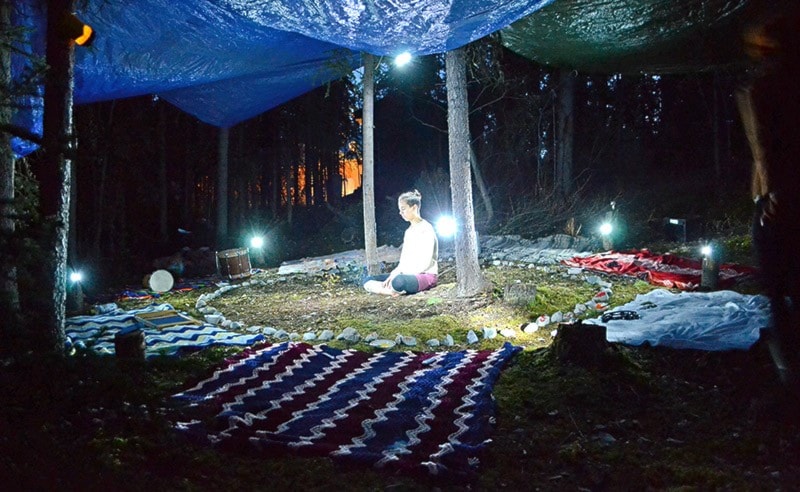Last summer, Lea Roy Bernatchez was in Santiago, Chile, at Encuentro 2016, where artists, scholars and activists from all over the continent met.
Under the theme “dissidence, sovereignties, performance,” the week-long event held last July was all about the intersectionality of art and social change.
“Art can play different roles in terms of change,” Roy Bernatchez said. “It can be a way of healing, it can be a way of gathering people, informing and remembering history.”
Of the 500 participants, Roy Bernatchez remembers meeting a Bolivian artist with whom she talked about the state of Indigenous women in Bolivia.
Her focus was on healing through art.
There are a lot of “connecting points” between Indigenous people in Bolivia and First Nations people in Canada, Roy Bernatchez said.
She also talked with Chilean activists, particularly about the Maputche, an Indigenous group struggling to keep access to its land and facing violence from police.
On Thursday, Roy Bernatchez will share her experience in Chile, but also her own questions with the audience at the Kwanlin Dun Cultural Centre.
“One part of it is definitely to be able to also talk with the audience about what they think about it and what they think we can do here,” she said.
Roy Bernatchez graduated from Concordia University’s contemporary dance program, in Montreal, two years ago. She moved shortly after to the Yukon, and has already taken part in a couple of performances.
As long as she can remember, she’s always wanted to help others.
As a kid, she thought about helping people by becoming a biologist and advancing research.
Instead, she took up art.
“It’s a powerful language to create discussion and connections between people,” she said.
One of them, Gwaandak Theatre’s Map of the Land, Map of the Stars, centred around looking at Yukon history through an Indigenous point of view.
“It’s a creation that works on sharing history and memories from different people of the Yukon ,” she said.
The performance took to the stage in Whitehorse last June, but the ensemble that created it will keep working on it for a final version next summer.
Roy Bernatchez also took part in Dance Improv on the Wharf in 2015 and 2016, and shows like Theatre in the Bush and Onde de Choc.
But right now what she wants to focus on is organizing art workshops in the communities.
“I’m at a point where I want to work with people to create something meaningful,” she said.
After the festival, Roy Bernatchez went back to Peru, where she did a theatre internship in a city not far from Lima in 2010.
She started talking with the actors, who were discussing women’s rights in the country, an important issue there at the moment.
“We started talking about the different ways we could create a performance,” she said. “It’s something I could bring here to create the opportunities for people to gather and exchange and create something together.”
Art is everywhere in our lives these days — we just don’t always recognize it, she said.
“Especially if there’s something you need to talk about, it’s a tool that anybody should be able to take,” she said.
We also don’t always realize how lucky we are to have the possibility to create art for entertainment purposes, Roy Bernatchez said, quoting an Iranian artist named Shirin Neshat, who was deported from her homeland.
“Where she is from, you have to be political because there is so much to talk about.”
Even if some people try to reduce the value of art to its practical outcome in money or skills, it remains tremendously important in our lives, she said.
“Culture is so important for people for your sense of community, for your life.”
The lecture will take place at the Kwanlin Dun Cultural Centre artist studio on Thursday from 7 to 9 p.m.
Contact Pierre Chauvin at pierre.chauvin@yukon-news.com
